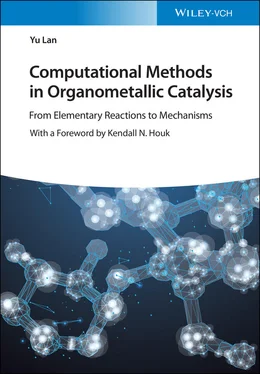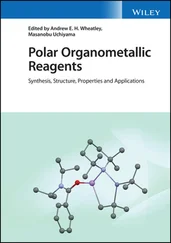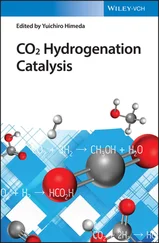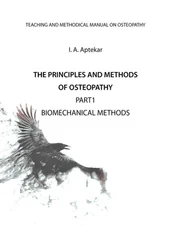Yu Lan - Computational Methods in Organometallic Catalysis
Здесь есть возможность читать онлайн «Yu Lan - Computational Methods in Organometallic Catalysis» — ознакомительный отрывок электронной книги совершенно бесплатно, а после прочтения отрывка купить полную версию. В некоторых случаях можно слушать аудио, скачать через торрент в формате fb2 и присутствует краткое содержание. Жанр: unrecognised, на английском языке. Описание произведения, (предисловие) а так же отзывы посетителей доступны на портале библиотеки ЛибКат.
- Название:Computational Methods in Organometallic Catalysis
- Автор:
- Жанр:
- Год:неизвестен
- ISBN:нет данных
- Рейтинг книги:4 / 5. Голосов: 1
-
Избранное:Добавить в избранное
- Отзывы:
-
Ваша оценка:
- 80
- 1
- 2
- 3
- 4
- 5
Computational Methods in Organometallic Catalysis: краткое содержание, описание и аннотация
Предлагаем к чтению аннотацию, описание, краткое содержание или предисловие (зависит от того, что написал сам автор книги «Computational Methods in Organometallic Catalysis»). Если вы не нашли необходимую информацию о книге — напишите в комментариях, мы постараемся отыскать её.
Computational Methods in Organometallic Catalysis — читать онлайн ознакомительный отрывок
Ниже представлен текст книги, разбитый по страницам. Система сохранения места последней прочитанной страницы, позволяет с удобством читать онлайн бесплатно книгу «Computational Methods in Organometallic Catalysis», без необходимости каждый раз заново искать на чём Вы остановились. Поставьте закладку, и сможете в любой момент перейти на страницу, на которой закончили чтение.
Интервал:
Закладка:
The d orbital of some transition metals could be filled by unpaired electrons, which led to a unique catalytic activity in radical‐involved reactions. The homolytic cleavage of transition metal–carbon (or some other atoms) bond is an efficient way for the generation of a radical species, which can promote further transformations. On the other hand, free radical can react with some transition metal leading to the stabilization of radical, which can cause further radical transformations [54–57]. Moreover, nucleophiles and electrophiles, activated by transition metals, also can react with radical to form new covalent bonds.
Although there is no electron barrier due to the appropriate symmetry of frontier molecular orbitals, a great deal of uncatalyzed pericyclic reactions would occur under harsh reaction conditions, which could be often attributed to the low‐energy level of highest occupied molecular orbitals (HOMOs) and high‐energy level of lowest unoccupied molecular orbitals (LUMOs) in reacting partners. Transition metals can play as a Lewis acid, which could significantly reduce the LUMO of coordinated organic moiety. Therefore, it has been widely adopted to catalyze pericyclic reactions, which leads to moderate reaction conditions and adjustable selectivity [58–62]. Moreover, the node of d orbital can change the symmetry of a conjugative compound, which involves a transition metal. Therefore, transition metal itself also could participate in a pericyclic reaction to reveal unique catalytic activity.
As an overview of organometallic chemistry, the core is the formation of a metal–carbon bond and its further transformation. Different from organocatalysis, organometallic catalysis process usually goes through multiple steps as well as complicated catalytic cycles, which originated from the complex bonding pattern of metallic catalyst and the variation of valence state for the central metal element. Consequently, improving the reaction efficiency and yield for organometallic catalysis encountered more difficulty than conventional organocatalysis. Moreover, the design of catalysis and ligand for transition metal‐catalyzed reaction is still facing both opportunities and challenges. To solve the above‐mentioned issues, the understanding of reaction mechanism is imperative, which could give more information for the detailed reaction process, and help to improve the reaction efficiency and yield.
1.1.2 A Brief History of Organometallic Chemistry
As an interdiscipline of organic and inorganic chemistry, organometallic chemistry has a history of almost 200 years since the first complex K[(C 2H 4)PtCl 3]·H 2O was reported by Zeise when he heated ethanol solution of PtCl 4/KCl [62]. The history of organometallic chemistry can be roughly divided into four stages. The chemists majorly focused on main group organometallic compounds in the nineteenth century. Later in the first half of the twentieth century, chemists paid more attention to understanding the structures of organometallic compounds involving transition metals. Then in the latter half of the twentieth century, various transition metal‐catalyzed reactions had been widely reported. Since this century, chemists have been keen on using transition metal catalysis to selectively construct more complex organic compounds. The outlined history of organometallic chemistry could be concluded in Scheme 1.3[63].

Scheme 1.3 A brief history of organometallic chemistry.
Source: Based on Didier [63].
The nineteenth century could be considered as the enlightenment era of organometallic chemistry. Frankland first systemically investigated organometallic chemistry and prepared a series of alkyl metal compounds in 1850s. In the late nineteenth century, ZnMe 2(in 1849 by E. Frankland), Sn(C 2H 5) 4(in 1859 by E. Frankland), PbEt 4(in 1853 by C. Löwig), Al 2Et 3I 3(in 1859 by W. Hallwachs and A. Schafarik), and RMgX (in 1900 by V. Grignard) had been prepared, and the chemical property of those compounds also had been studied [64–68].
In 1890, Ni(CO) 4was found as the first metal carbonyl complex by L. Mond et al. in the study of the corrosion of stainless steel valves by CO [69]. Next year, Fe(CO) 5was also found by the same group [70]. It could be considered as the beginning of the structural study of organometallic complexes. Two years later, Werner proposed structural theory of organometallic complexes involving the tetrahedral, octahedral, square planar, etc. which won him the Nobel prize in chemistry in 1913 [71]. In 1919, Cr(C 6H 6) 2was prepared by Hein using MgPhBr to react with CrCl 3[72]. However, the sandwich‐like structure of this complex was proved by Fischer 36 years later. In 1951, Fe(C 5H 5) 2had been synthesized by Kealy and Pauson individually [73]. The sandwich‐like structure of that complex was confirmed by G. Wilkinson the following year, which aroused chemists' enthusiasm for the study of transition metal organic compounds. In 1964, tungsten carbene complex was reported by Fischer, who shared 1973 Nobel prize in chemistry with G. Wilkinson [74]. By the 1950s, with the appearance of representational methods, involving X‐ray crystallography, infrared spectrum, and nuclear magnetic resonance spectrum, means of characterizing transition metal compounds were becoming more and more mature. Therefore, organometallic chemistry became an independent discipline.
From the middle of the twentieth century, organometallic compounds were gradually considered as a catalyst in organic reactions. In 1953, Ziegler and Natta found that TiCl 4/AlEt 3could promote atmospheric polymerization of olefins, which helped them share 1963 Nobel prize in chemistry [75, 76]. In 1959, allylic palladium was prepared by Smidt and Hafner, which was the beginning of π‐allyl metal chemistry [77]. The same year, Shaw and Ruddick reported an elementary reaction of oxidative addition [78]. In 1974, Wilkinson reported another elementary reaction of β‐hydride elimination [79]. Those works led to a series of following mechanistic studies for organometallic reactions. In 1972, Heck and Nolley reported a palladium‐catalyzed coupling reaction between aryl halides and olefins, which was named Heck reaction [80]. Meanwhile, a series of palladium‐catalyzed cross‐coupling reaction, including Kumada coupling with Grignard reagent [81], Suzuki coupling with aryl borane [82], Negishi coupling with organo zinc [83], Stille coupling with aryl tin [84], and Sonogashira coupling with alkynyl copper [85], were reported. Those reactions made transition metal‐catalyzed cross‐coupling reactions one of the most important ways to construct new C—C covalent bonds in synthetic chemistry. Therefore, R. F. Heck, E. Negishi, and A. Suzuki won the 2010 Nobel prize in chemistry. Also in 1971, W. S. Knowles applied chiral bisphosphine ligands as ligand in rhodium‐catalyzed hydrogenation reactions, which had opened up a whole new field of asymmetric catalysis with transition metals [86]. W. S. Knowles shared 2001 Nobel prize in chemistry with K. B. Sharples and R. Noyori, who promoted the research upsurge of asymmetric catalysis. Moreover, Chauvin, Grubbs, and Schrock won the 2005 Nobel prize in recognition of their outstanding contributions in transition metal‐mediated metathesis of olefins.
Based on the advances of methodology study and ligand design, transition metal catalysis has become one of the important means for synthetic chemists to construct more complex new substances in this century. The current pursuit is to selectively construct multiple covalent bonds in one reaction synchronously by transition metal catalysis. To achieve this goal, transition metal catalyst has been employed to selectively activate some inert covalent bonds. The most famous example – transition metal‐mediated C—H bond activation – became the focus of chemists. This process could afford a carbon–metal bond directly, which could be used as a powerful nucleophile in further transformations. In modern organometallic chemistry, multistep elementary reactions in series have been extensively studied, which could afford a battery of new covalent bonds through one catalytic cycle. Synthetic efficiency in organometallic chemistry has become the focus of attention. Hereon, transition metal catalysis with higher turnover numbers was pursued to further improve the economy and environmental protection. Current research on transition metal catalysis is also devoted to improving the accuracy of synthesis, aiming at achieving specific functional group transformation in the exact location. To achieve these goals, the design of transition metal catalysis becomes more complex, and the requirements for suitable ligands are higher. It is necessary to design the corresponding ligands manually according to aspects of structure, electronic properties, steric effect, and coordination ability. These auxiliary designs also make the catalytic cycle with transition metal lengthier; meanwhile, the possibility of side reactions increases. Therefore, mechanistic studies for transition metal catalysis became more and more important, which were helpful for design of new catalysis, enhanced efficiency, increased selectivity, improved turnover number, and accurate synthesis.
Читать дальшеИнтервал:
Закладка:
Похожие книги на «Computational Methods in Organometallic Catalysis»
Представляем Вашему вниманию похожие книги на «Computational Methods in Organometallic Catalysis» списком для выбора. Мы отобрали схожую по названию и смыслу литературу в надежде предоставить читателям больше вариантов отыскать новые, интересные, ещё непрочитанные произведения.
Обсуждение, отзывы о книге «Computational Methods in Organometallic Catalysis» и просто собственные мнения читателей. Оставьте ваши комментарии, напишите, что Вы думаете о произведении, его смысле или главных героях. Укажите что конкретно понравилось, а что нет, и почему Вы так считаете.












